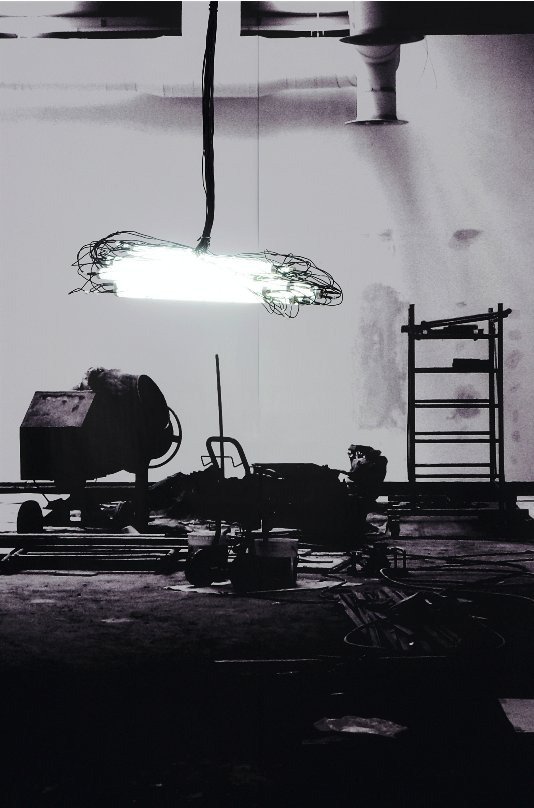Monica Bonvicini & Sterling Ruby
dal 23/10/2013 al 1/2/2014
Segnalato da
23/10/2013
Monica Bonvicini & Sterling Ruby
Kunsthalle Mainz, Mainz
The artists are among the most important representatives of a critical art in which questions of the psyche, urban living space and unsettling counterculture are expressed. Architecture in particular is at the center of their work.

Curated by Thomas D. Trummer
The Kunsthalle Mainz is continuing its series of double exhibitions with a show featuring the work of Monica Bonvicini and Sterling Ruby. Bonvicini and Ruby are among the most important representatives of a critical art in which questions of the psyche, urban living space and unsettling counterculture are expressed. The focal point of the work of both artists is the potential for release under repressive conditions. Architecture in particular is at the center of their work. Both Bonvicini and Ruby work with interior spaces. This becomes most evident in their exploration of prison architectures, which both artists work through as gestures of domination and repression.
Monica Bonvicini
Born in Venice in 1965, Monica Bonvicini studied at Berlin's Hochschule der Künste and at the California Institute of Arts. In 1999, she was awarded the Golden Lion at the Biennale in Venice and in 2005 the Young Art Prize by the Nationalgalerie in Berlin. Today, she teaches sculpture and performative art at the Academy of Fine Arts Vienna. She first met Sterling Ruby at the Art Center College of Design in Pasadena, where she was a visiting professor in the late 1990s. It was her suggestion that their works be jointly exhibited, distributed throughout the galleries of the Kunsthalle Mainz.
In Mainz, Bonvicini is exhibiting drawings, watercolors, collages, videos, and sculptures. A monumental scaffold, four meters high, is located in the foyer, depicting a stairway leading nowhere; curtains of steel chains hang from its sides. "We do not define spaces; instead they define us: we are forced to accept that the door is here, or that you have to go down three steps there. But I do not regard it as normal at all to behave according to what the architecture prescribes," says Bonvicini.
Representations of simple mechanical objects, typically used by men, and heavy equipment dominate. A chainsaw hangs from the ceiling; another is embedded in a cube. A workbench, blue coveralls, the inevitable cover girls, and two watercolors of workers who look like more like photographic models complete a group on the fetishization of male workers. In the rear section of the Kunsthalle Mainz, Bonvicini has installed an extensive stairway: a mixture of glamour and strewn trash. The work was exhibited for the first time at the Venice Biennale in 2011, and refers to a painting by Tintoretto in Bonvicini's home city of Venice. The painting, which depicts Mary as a child entering the Temple, is preserved in the church of the Madonna dell'Orto. The latent patriarchal violence of the Renaissance work is translated by Bonvicini into the parallel construction of an insubstantial theater.
Sterling Ruby
Sterling Ruby was born in Bitburg in the Rhineland-Palatinate in 1972, the son of a Dutch mother and an American father. The family moved to the United States shortly after his birth. Upon completing high school, Ruby worked in construction, became a professional skateboarder, and played in several punk bands. He studied art at the Pennsylvania School of Art and Design, the Art Institute in Chicago, and in Pasadena, California, where he became the teaching assistant for Mike Kelley, who died in 2012.
Compulsive disturbances, psychological obsessions, and states of excess characterize Sterling Ruby's works. The Kunsthalle Mainz is featuring his collages and videos from the past eight years; carefully combined into groups by Ruby, they tell of gangs and graffiti, of punk and sub-culture, a masculine thirst for war, consumption and decline, prison and globalization. Ruby sees his works as a means to vent, lashing out in rebellion against strict forms, rational pressure, and authoritarian conditions. His works include montages with shiny foil, iridescent silvery surfaces, and watercolors against synthetic color backgrounds. Compulsive repetition, idolatry, and other psychological syndromes are recurring themes. Some of his works are marked by fingerprints, soiled with dirt and pasted-in photographs. Gaping maws and vampire mouths are juxtaposed with cave paintings whose bizarre peaks are shaped like frightening jaws. Ruby views himself as a political artist who opposes repressive realities, stating "[…] paranoia regarding terrorism is used to give primacy to the ideologies of America ahead of other countries."
Image: Monica Bonvicini, Kleine Lichtkanone, 2009. Courtesy: the artist and Johann König, Berlin, © VG Bild-Kunst, Bonn 2013
More informations:
Fabienne Rosenbach, Assistant to director, secretary’s office rosenbach@kunsthalle-mainz.de
Opening Thursday, october 24,2013, 7pm
Kunsthalle Mainz
Am Zollhafen 3-5 55118 Mainz, Germany
Hours: Tuesday, Thursday, Friday 10am–6pm;
Wednesday 10am–9pm;
Saturday–Sunday 11am–6pm
Entrance fees:
Adults 5 €
Discounted price for pupils, students, OAPs, severely disabled persons 2 €
Groups of 10 adults upwards (per person) 3.50 €
Groups of 10 upwards reduced (per person) 1.50 €
Children up to 6 years free admission
Annual season ticket 25 €



